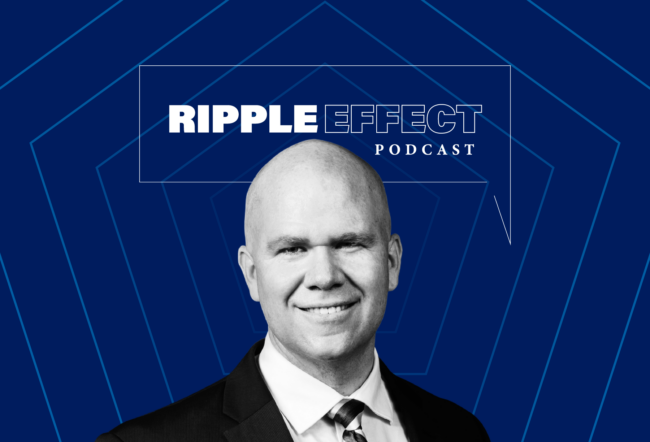At the Wharton India Economic Forum meeting in Mumbai earlier this year, one of the speakers was the Comptroller and Auditor General (CAG) of India, Vinod Rai. He expressed surprise that he — a backroom numbers man — was being recognized at the meeting. “The CAG is not used to such publicity,” he told India Knowledge at Wharton afterward. “In a short while, I will be anonymous once more.”
Rai had sprung into the limelight at the time because of the CAG report on the telecom scam involving the licensing of spectrum for 2G wireless in 2008. The CAG is the auditor to the government and, in this watchdog role, it had uncovered various irregularities in the allotment of 2G telecom licenses. The loss to the exchequer was put at Rs. 1.76 lakh crore (US$32 billion)
Now Rai is back in the limelight due to another big-ticket scam, this one involving the allocation of coal blocks to private companies. The loss figure for this incident, according to the CAG, is Rs. 1.86 lakh crore (US$33 billion). The report on the scam was one of three tabled in the Rajya Sabha — the upper house of Parliament — on August 17. The first dealt with alleged irregularities in the implementation of the public-private partnership for Indira Gandhi Airport in New Delhi. GMR, the private partner in the project, disputed the report, saying, “Delhi International Airport has not received any undue benefits from the government before, during or after the bidding process.” The second report said Reliance Power had gained Rs 29,000 crore (US$5.2 billion) by diverting excess coal from the mines allotted for its Sasan project in Madhya Pradesh. This was denied by Reliance Power CEO J.P. Chalasani. “The CAG charges are incorrect,” he said. “The CAG calculations are erroneous.”
But it is the third report, titled “Performance Audit of Allocation of Coal Blocks and Augmentation of Coal Production” that has set off another round of chaos in Delhi. According to the report, “Delay in introduction of the process of competitive bidding has rendered the existing process beneficial to the private companies. Audit has estimated financial gains to the tune of Rs 1.86 lakh crore (US$32 billion) likely to accrue to private coal block licensees.” The private companies mentioned in the CAG report include respected names such as the Tatas and the Birlas.
Opposition parties have been holding up the functioning of Parliament. They have called for the resignation of Prime Minister Manmohan Singh; the coal portfolio was in his charge for part of the time covered in the report. The government has fought back with the argument that as no coal has been evacuated from these mines as yet, the loss is actually zero. This is new Finance Minister P. Chidambaram’s contribution to the debate. During the telecom scam, Telecom Minister Kapil Sibal (who was appointed after the previous minister — and principal accused — A. Raja was sacked and later arrested) had similarly argued that the loss in the telecom scam was nil. Neither minister has done his image any good, critics note.
Although the scam is snowballing in Parliament, corporate India has been dismissive. This is not a case of breaking laws, they say. Nor, it seems, has anyone made any money. Yes, the private companies will gain in the long run. But they argue that the incident is equivalent to the government giving land at a discounted rate to an IT company to set up a campus. People don’t typically grumble about that, as it creates jobs.
“What is the scam?” asks Tata Steel managing director H.M. Nerurkar. Speaking at the annual general meeting of Indian Refractory Makers Association, he said: “There was a policy and people have followed the policy. Coal is just a pass through. If coal prices increase, it will be reflected in power rates.” Adds S. Raghunath, professor for corporate strategy and policy at the Indian Institute of Management in Bangalore (IIMB): “The CAG observations may not be totally fair to those who were responsible for implementing government policy. In many areas, the projection of reality by different stakeholders has made accurate analysis difficult.” But The Times of India reports that the Central Bureau of Investigation is preparing to file several first information reports (FIRs) in the scam. So there may yet be uncovered dimensions.
Meanwhile, even as Chidambaram was detailing his zero-sum theories, he received a boost on another issue from the Supreme Court: Hearing a petition filed by Janata Party president Subramanian Swamy, the court held that neither Finance Minister Chidambaram nor bureaucrats of the ministry of finance had any role to play in the telecom scam.
But Chidambaran’s charge as the new finance minister to jumpstart India’s slowing economy is slipping deeper into inertia. First, it was the anti-corruption crusade by Anna Hazare, which pushed the government into policy paralysis. That threat was defanged when Hazare disbanded his movement and decided to join politics. But now the CAG report has sent the government back into a standstill.
“The cacophony over the CAG reports is pushing back reforms,” according to the Associated Chambers of Commerce and Industry of India (Assocham), India’s apex chamber of commerce. A survey by the chamber found an overwhelming number of economists and industry leaders agreeing that recent government initiatives were being drowned out by the political noise. “The national economic agenda is being used as a football in the political arena,” the chamber noted. “Reform measures like foreign direct investment (FDI) in retail … and banking and insurance liberalization are certainly going to be pushed back by a few years.” Says Assocham president Rajkumar Dhoot: “This is sad because the economy needs a non-partisan approach. The GDP growth has touched a nine-year low of 6.5%.”
Paralyze or Mobilize?
“The CAG report is a political millstone around the government’s neck,” adds Rajesh Chakrabarti, a professor of finance at the Hyderabad-based Indian School of Business. “It will further reduce the government’s already eroding credibility and provide wholly understandable fodder to an otherwise directionless opposition.” M.V. Rajeev Gowda, professor of economics and social sciences and chairperson of the Centre for Public Policy at IIMB agrees, calling the report “another blow to the government, [which is] already reeling from various allegations of scams. It is not at all clear that the huge numbers that the CAG has come up with are accurate or meaningful. But the report piles up more ammunition against the government, this time targeting the prime minister himself, someone who has always been above allegations of corruption. So it will likely lead to more policy paralysis.”
Raghunath of IIMB has a different view. “The recent CAG reports will enable the government to introduce further reform moving toward equity and transparency,” he says. “These developments will contribute to keeping the system relatively clean and from going out of kilter. Continual intervention in the policy and its deployment in different sectors will ensure that the entire regulatory process moves toward greater efficiency and transparency.”
The companies that have been named aren’t likely to face much flak, Gowda states: “Since the media keeps focusing on the allegations against the government, the corporates named as beneficiaries have escaped attention,” he notes. “In any case, unlike in the 2G scam where there were clear transactions between corporates and corrupt politicians, it is not clear that a direct link can be shown in the coal case.”
More worrisome is the potential impact abroad. “The CAG report worsens our image,” says Gowda. “The country is seen as a milieu steeped in corruption. This is not a good image to attract global players.” Adds Chakrabarti of ISB: “In the global competitiveness report of the Davos group, corruption features as the biggest problem for India in investor perception. Two years ago, it was a distant second to infrastructure.”
The immediate impact is likely to be on private equity and FDI, and foreign institutional investor (FII) purchases, experts say. FII inflows have been strong. For the month to August 24, foreign investors had pumped in US$1.3 billion into Indian stocks. But experts feel that was in the expectation of fresh reforms under Chidambaram.
Anecdotal evidence about FDI is mixed. Furniture retailer IKEA’s demand for some relaxations in the rules for sourcing from small-scale units is unlikely to me met. “I will not allow any relaxation that affects my people and my industry,” says Vayalar Ravi, Union minister for micro, small and medium enterprises. At the same time, six other retailers, including Tommy Hilfiger and Brooks Brothers, have submitted proposals to set up 51% owned units in India. This is allowed for single-brand retail. Multi-brand retail, over which the controversy is continuing, may also eventually be permitted entry. But the state governments will be allowed to take the final call on whether such companies should be allowed to operate in their territories. This is unlikely to enthuse multinationals who will find the Indian market truncated and segmented.
“India has a 5%-6% growth rate with a large population base and a large market,” notes Pankaj Karna, managing director of Maple Capital Advisors. “It is growing faster than most markets in the world. This makes it difficult for strategic players to ignore the country, especially if they are not in India as yet. So I think FDI interest will continue across sectors. Small and mid-cap plays are likely to increase; I don’t see any let up on that. The issues will be the big ticket areas. Proposals significantly impacted by policy and environment in India today will wait and watch. Overall, big inflows will certainly get impacted, while investors will continue to be on the sidelines, or experiment with small-ticket plays on India.” In June, the latest month for which figures are available, FDI into India fell 78% to US$1.2 billion compared to US$5.7 billion for the corresponding month in 2011.
Private equity is also getting cold feet. “Investors are reassessing their commitment and allocations,” says Deepak I. Shahdadpuri, managing director of BCP Advisors. “In the short term, I think we will continue to see a slowdown as foreign investors take stock of the global macro and India-specific issues. The recent CAG report only highlights the level of ‘alleged’ scams and corruption embroiling India Inc. and the government. Combine this with the lackluster performance of private equity as an asset class to date in India. (Between 2004 and 2011, India has only returned US$24 billion versus the US$72 billion in capital invested.) It’s not surprising then that private equity is in reassessment mode.”
“I think there are two-three trends that are emerging,” adds Karna of Maple. “New fund raising is going to be most impacted. Governance issues, fundamental economic indicators, and the exchange rate have affected overall returns from India for existing funds. For existing PE funds, I think there is actually enough committed capital. But deployment velocity may get impacted.”
“However there is no denying the potential opportunity in India,” concludes Shahdadpuri. “Investors will return once their confidence in the government is restored.” The fear is that it may take a new government — elections are due in 2014 — for that to happen.



